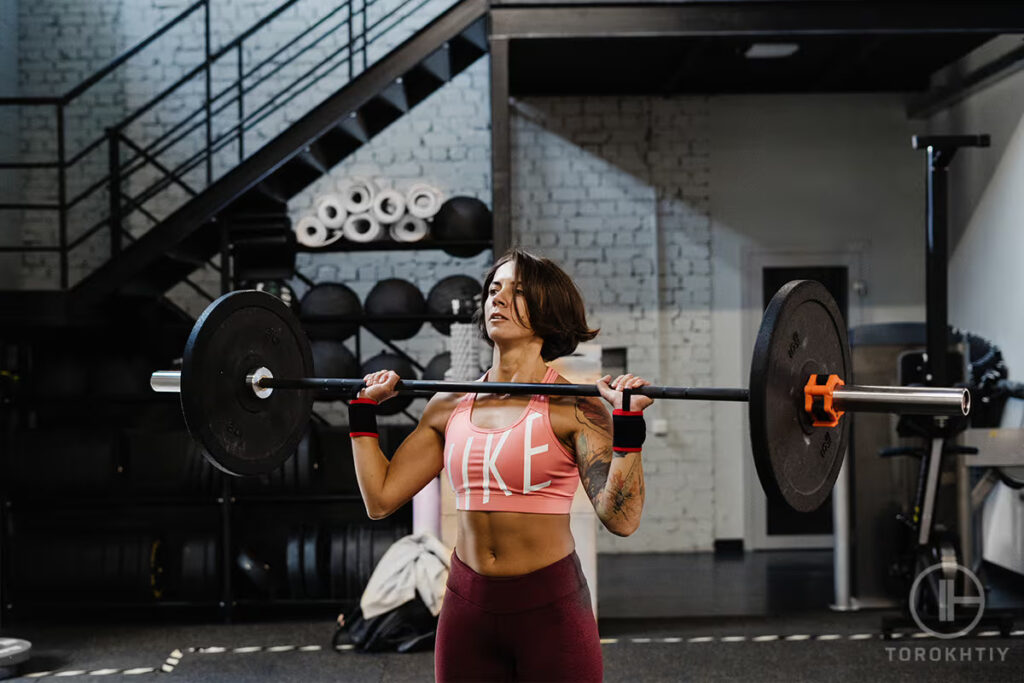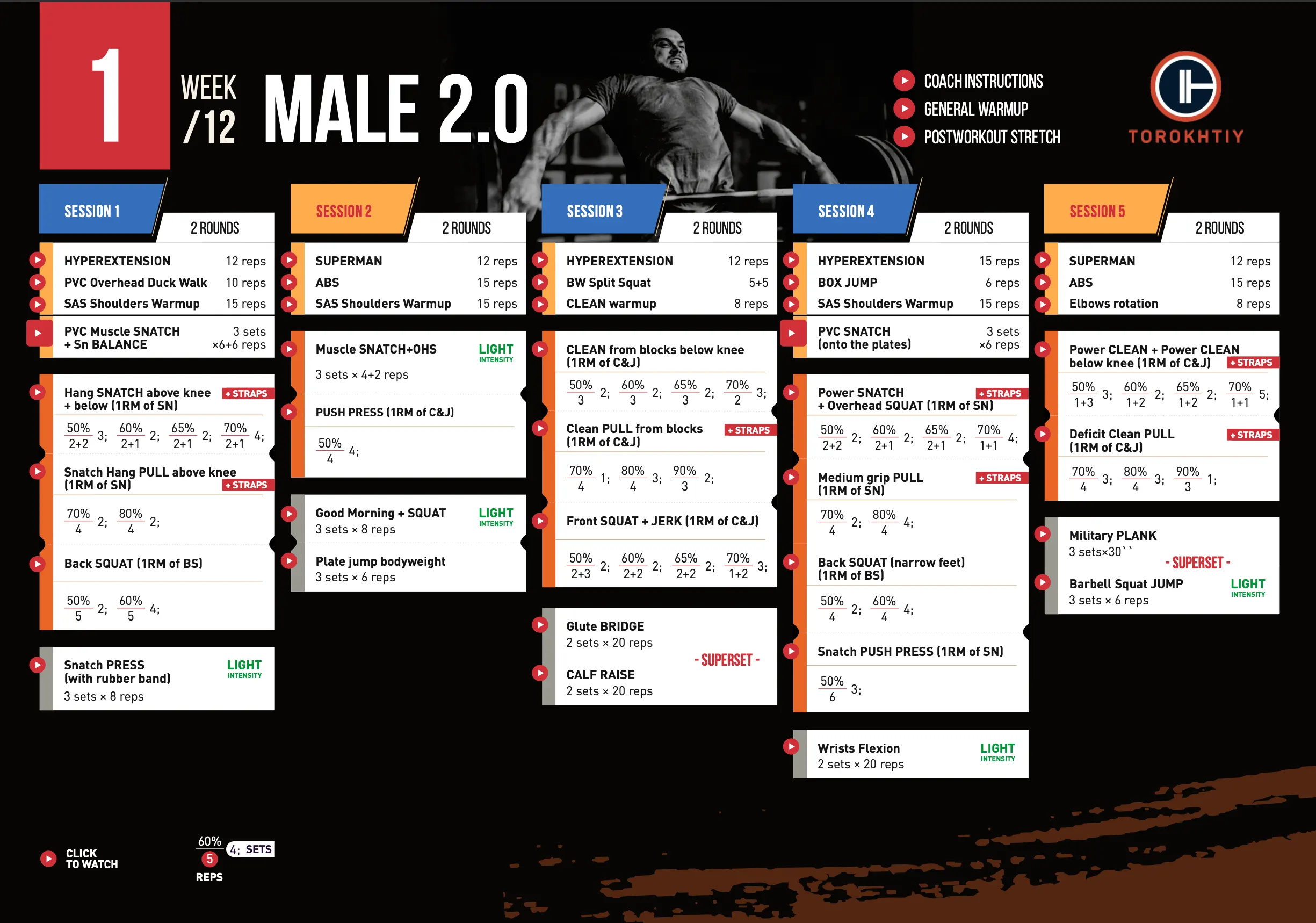Why Athletes Hate Jerk Lift
Author:
Unlock your full potential by engaging with our experts and community! Have questions about your fitness journey or looking for expert advice on weightlifting techniques? Don’t hesitate — leave a comment below and Sergii Putsov will provide a personalized answer and insights to help you reach your goals.
Torokhtiy is reader-supported. Some links are affiliate links, and we may earn a commission at no extra cost to you. See our disclosure page for details.

Weightlifting consists of a snatch and C&J, which in turn consists of clean and jerk. That is, we are dealing with three different exercises in which we aim to raise the maximum weight. Perhaps, you noticed that at competitions professional athletes more often don’t jerk than don’t clean. The same thing I observe in amateur gyms. From my experience, that is about 180 seminars, I can say that most athletes like the snatch, fewer athletes like the clean, and I think most hate the jerk. As a rule, one dislikes this exercise for two reasons: there is no full understanding of movement and in the second place – lack of training. We’ll talk about these two things today.
As you know, I often experiment with variations of different exercises and 1-2 times a year I choose one of the exercises by dipping into it for testing.
I know how many people have watched a video of me making a jerk from the racks 255 kg, also a few hundred people have seen it live. For most, it was a moment when I tuned in, came up to and jerked, and then tore my T-shirt and accepted congratulations and photographed with everyone. For me, everything was different: more than 6 months of purposeful and persistent preparation for one exercise and an hour of performance in a new show format, on an open area, on a very hot summer day of 2016 in Los Angeles.
For me, it was great progress + 15 kg from the best PR in the jerk. It was my first experience when after professional sport I purposefully focused on developing one exercise, instead of pulling and balancing preparation in three ones. I was interested in both the result and the experience gained as a result of such a narrow-directional training process that I share with you.
You may like it:
- Detailed Olympic Weightlifting Program For Beginners
- 12-Week Weightlifting Program For Women (Detailed Example)
- Create Your Olympic Weightlifting Program (Examples Included)
Of course, most of the work is done in jerk exercises. Variations and complexes of these exercises are aimed at working out the stability of jerk support, dip, drive, and fixation. Depending on the preparation period and the weaknesses available, their ratio may vary.
My goal for today is to develop the habit of stabilizing myself and the bar in over the head. For this purpose, after each rep I remain in this position 2-4 seconds, both when working with large weights, and in the Sots Press with the weight of 40-60 kg. Every 2 weeks I perform jerk from racks with plates on rubber band with a weight of 60-75%, 2-3 reps. At once I hasten that I do NOT recommend this exercise to athletes whose experience is less than 5 years of systematic training sessions. Yes, the exercise is effective but quite traumatic.
Follow us!

Free!
Get a 2-week Weightlifting Program as a bonus for the subscription to kickstart your training plan!

Free!
Increasing power indicators is an important part of the training. I can’t say that in pulls I lift some big weights, but 1-2 times a week the deficit Romanian deadlift or clean pull is in the program: 3-4 reps 4-6 times.
As for the squats, it is another story. When I perform a jerk from the racks, I almost always do in a complex with front squats: it helps to warm-up well, load my legs and prepare myself for the working regime.
I often heard from athletes the problem that at competitions after clean the bar “crushing”. Most often this happens because the athlete is not ready to jerk in a state of fatigue. Just the complex of front squat + jerk very well trains workability in a state of fatigue.

The exercise of jerk support in static is also very effective. Carefully examine the VIDEO and note how to accept the starting position correctly. And remember that in this exercise the muscles of the stomach and back are always tight and one needs to breathe. In this exercise, many top athletes lifted from 110 to 130% of the C&J. I recommend lifting up to 120% 2-4 sets for 4-8 seconds.
Back squats are one of the main exercises of the weightlifter. It’s enough for me to do it 1-2 times a week. Heavy squats (over 90%, more than 240 kg) I plan not more often than 1 time in 2 weeks 2-3 sets 2-3 reps. Variations of jump work are a mandatory part of the training program.
The development of strength and stability of arms and body is also an important element of my training. One of the favorite exercises is a push press and its variations and complexes: front squats, with discs on the rubber, with a pause in the dip. I try to make more reps from 4 to 8. I also perform a lot of exercises with my own weight: dips, deep bench push-ups and reverse push-ups. Lately, for abdominal muscles, I use an exercise with a bar, which I looked at from strongmen.
I often repeat that warm-up is a very important part of the training for me. After a general warm-up of not less than 15-25 minutes I devote myself to preparatory exercises: work with rubber, gakk-squats, variations of hyperextension, good mornings – my daily routine, which helps me to warm up well and protects from injuries.
Ironically, even though preparation is built for progress in only one exercise – jerk, snatch exercises, clean, pulls and squats are important components of the program, which cannot be excluded in any way. Variations and complexes of these exercises help to switch and rest from the mechanics of the jerk, and clean or muscles clean is an excellent means for warm-up. The load is planned in the range of 50-70% to maintain the skill, preserve the muscle tone. On technical days, which I have at least 1-2 a week, I pay attention to individual elements and weaknesses.
Summing up my experiment, I can draw the following conclusions about what exactly a training program in jerk should include:
- Work on overhead bar stabilization: add a pause (2-4 s) at fixation;
- Leg strength development: use of squats, complexes (squats + jerk) and jumps;
- Development of core muscles;
- High-quality warm-up of upper limbs.
At the beginning of the article, I said about my observation and communication with many athletes around the world, from whom I have heard more than once that clean is easy for them, they like a snatch and most do not like and do not understand a jerk. I remembered that in our national team there were similar athletes. In the off-season, the head coach selected for them a separate training program for 4-6 weeks, in which he reduced load in a snatch, clean and pulls, but focused on jerk and squats, and it gave good results.
For those athletes who have similar difficulties, as well as for those who find it difficult to understand how to properly organize loads, I have prepared a new training program Jerk Cycle. The program duration is 5 weeks and it consists of 25 sessions with rational alternation of heavy, technical and recovery days, which are balanced by volume and intensity. Еach session is dedicated to JERK specific skills and drills. I have gathered 55 necessary exercises, which will help to strengthen the base and weaknesses. A special warmup routine for mobility and prehab before each session will help to prepare the full body for safe and effective training. It is a combination of auxiliary exercises to prepare muscles, ligaments, and joints. Variations of loads and their effective and safe distribution in weekly cycles will create a reserve of workability and forces to transfer the jerk to a full competitive C&J on the platform.
Train together – train right!
You might be interested in:
Why Trust Us?
With over 20 years in Olympic weightlifting, strength training, nutrition coaching, and general fitness our team does its best to provide the audience with ultimate support and meet the needs and requirements of advanced athletes and professional lifters, as well as people who strive to open new opportunities and develop their physical capabilities with us.
By trusting the recommendations of our certified experts in coaching, nutrition, and sports training programming, as well as scientific consultants, and physiotherapists, we provide you with thorough, well-considered, and scientifically proven content. All the information given in the articles concerning workout programming, separate exercises, and athletic performance, in general, is based on verified data.
The product testing process is described in more detail here.
Author: Sergii Putsov
Head of Sport Science, PhD
Best Results: Snatch – 165 kg,
C&J – 200 kg
Sergii Putsov, Ph.D., is a former professional weightlifter and National team member, achieving multiple medals in the 94 kg weight category at national competitions. With a Master’s degree in “Olympic & Professional Sport Training” and a Sport Science Ph.D. from the International Olympic Academy, Greece, Sergii now leads as the Head of Sport Science. He specializes in designing training programs, writing insightful blog articles, providing live commentary at international weightlifting events, and conducting educational seminars worldwide alongside Olympic weightlifting expert Oleksiy Torokhtiy.




Still have questions after reading our article? Unlock your full potential by engaging with our experts and community! Don’t hesitate — leave a comment below and Sergii Putsov will provide a personalized answer and insights to help you reach your goals.